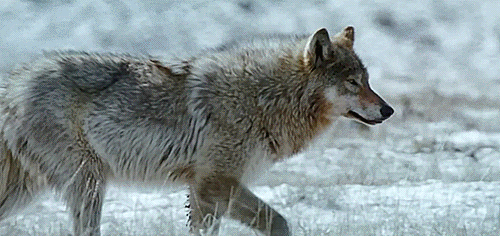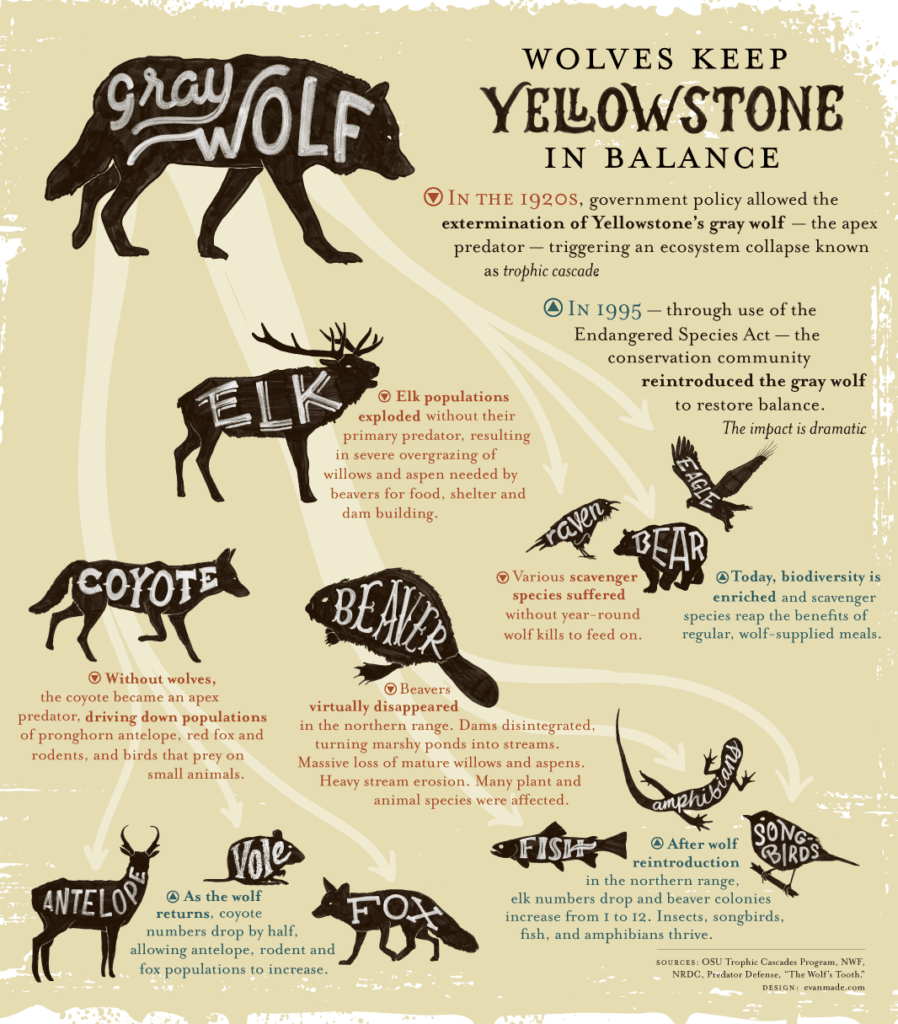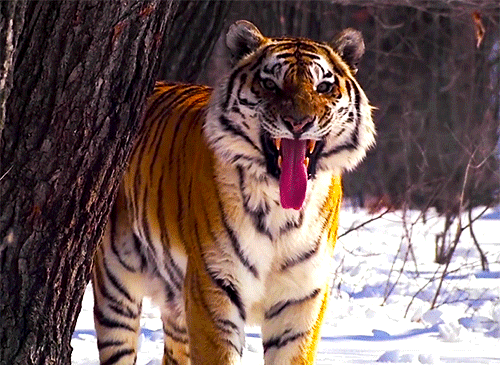The Apex Predator is not your enemy
 |
| Greg Harlin via Chesapeake Bay Program. |
The power of fear
 |
| Via Daily Mail. |
 |
| Via Two Oceans AQUARIUM. |
Nowadays, whose status as an apex predatormakes it indispensable to its ecosystem, is listed as a species vulnerable to extintion. Current efforts to save this species include research and broadcast of well founded information that bust myths about this creature, such as the famous Shark Week, Discovery Channel's week-long programming block dedicated to sharks. To keep the marine ecosystem in balance, we must switch our perspective about the white shark from fear to respect.
An ecosystem without its apex predator
In a food chain, mesopredators are animals that have a predator and a prey. For example, a raccon is prey for a coyote, but a predator of rats. A hypothesis called the "mesopredator release" states that retrieving the apex predator from a trophic chain creates a superavit of mesopredator population, unbalancing the entire web.
In 1986, the Simon Bolivar Hydroelectric Center in Venezuela, a dam that would help power most of the country, began operations. When the final gates closed, the dam created a water overflow that was redirected to a tropical rainforest. The flood became a new formation and the highest peaks of the forest became an archipielago that was mapped out by a new river, the Guri reservoir. The new land distribution became too small for big predators. That is how an entire ecosystem was left without apex predators.
In 1986, the Simon Bolivar Hydroelectric Center in Venezuela, a dam that would help power most of the country, began operations. When the final gates closed, the dam created a water overflow that was redirected to a tropical rainforest. The flood became a new formation and the highest peaks of the forest became an archipielago that was mapped out by a new river, the Guri reservoir. The new land distribution became too small for big predators. That is how an entire ecosystem was left without apex predators.
Free of apex predators, every island hosted its own community of castaway mesopredators;
- Tipically, the howler monkey is a social animal that lives in packs of 3 to 7 monkeys led by a male. Imprisoned in this new island, the density of these mesopredators mutliplied by 50. Without predator but with hunger, these monkeys became isolated creatures, with incoherent groups, whitout socializing and fighting for food. The trees, affected by the monkey's high rate of consumption, evolved to sproud leaves with a certain level of toxines. Howler monkeys stop howling.
- Atta ants are dedicated to cut leaves and create compost to sustain their fungi farms. In many tropical forests, these farms are not big or attention-worthy, and their harvests are minimal. However, the Guri reservoir is not sustainable for armadillos, the ants' mesopredators. Free of any risk, the ants' leaf harvest rose at an alarming rate. The harvested trees became vines with thornes and their roots became hollow fungi farms. The tropical forest became a thorny scrubland reigned by ants.
 |
| Via Gfycat. |
Chain reaction
The wolf is an apex predator that has been feared since way before the colonization of America. More than feared though, it has been hated because he is the main threat to livestock. Ever since humans started keeping livestock, the wolf has been actively hunted. At the Yellowstone National Park in Wyoming, USA, the presence of the gray wolf has been such an inconvenience to farmers, that a Predator Control Act was enacted in 1926 that completely eradicated the wolf. The gray wolf is not just an apex predator, though, but a keystone species. This means that an entire ecosystem depends upon this one species, and its extinction would not only affect the ecosystem, it would destroy it entirely.
 |
| Via Tumblr. |
The protection of apex predators has been founded on the negative consequences of constantly attacking these species. However, this perspective has not improved the predators' reputation, since the main motivator to protect them has been to avoid a natural catastrophe. What would happen if we find a positive approach towards apex predator conservation?
The siberian tiger is known as the host of the taiga. Its habitat extends throughout temperate forests in Eastern Russia, the Chinese frontier, and even possibly North Korea. This tiger species is danger of extinction. While the animal itself is hunted for sport and to obtain elements of traditional Chinese medicine, its habitat is threatened by tree logging and environmental destruction. Yet, the great extension of this animal's habitat has earned it the title of umbrella species, a species that is selected as the center of conservation decision-making because the protection of this animal indirectly influences the conservation efforts of other species in its ecosystem. This way, efforts to protect the siberian tiger extends to its entire habitat, in turn supporting the protection of species like elk and boars, and promoting imitations and regulations to forest logging in the taiga.
 |
| Via The Little Owl Site. |
Who controls apex predators?
It is now clear that the apex predator is essential for the balance of all their ecosystems. They regulate their prey population, but... who controls the apex predator population? Ruled by our warning instinct, humans cannot avoid thinking the apex predator is dangerous and we believe we must reign the highest level of the trophic web and keep apex predators at bay. We find it hard to understand that the earth needs to human intervention to find its natural balance. Apex predators are generally big animals (relative to their ecosystem) with long breeding periods, This means that they take longer to reproduce than the rest of its food chain. A brown bear eats hundreds and hundreds of young salmon that will never reproduce. However, while a salmon spawns thousands of eggs in one bearing, the bear will breed no more than 15 cubs in its lifetime. Due to a slow life cycle, the population of an apex predator species will always be in proportion to their prey.
Even more relevant is the fact that humans compete with apex predators for food. Believing that apex predators are killing machines with no other instinct but murder, humans have tried to preserve our food sources from an offensive stance, we attack with no provocation and we seek to take the spot of the agresor in the trophic chain without considering that we are not in a superior level, but a parallel one. We are an unsustainable species of apex predator. Other apex predators hunt out of survival instinct, hunting when necessary. Us humans hunt for sport and interest.
It is now clear that the apex predator is essential for the balance of all their ecosystems. They regulate their prey population, but... who controls the apex predator population? Ruled by our warning instinct, humans cannot avoid thinking the apex predator is dangerous and we believe we must reign the highest level of the trophic web and keep apex predators at bay. We find it hard to understand that the earth needs to human intervention to find its natural balance. Apex predators are generally big animals (relative to their ecosystem) with long breeding periods, This means that they take longer to reproduce than the rest of its food chain. A brown bear eats hundreds and hundreds of young salmon that will never reproduce. However, while a salmon spawns thousands of eggs in one bearing, the bear will breed no more than 15 cubs in its lifetime. Due to a slow life cycle, the population of an apex predator species will always be in proportion to their prey.
Even more relevant is the fact that humans compete with apex predators for food. Believing that apex predators are killing machines with no other instinct but murder, humans have tried to preserve our food sources from an offensive stance, we attack with no provocation and we seek to take the spot of the agresor in the trophic chain without considering that we are not in a superior level, but a parallel one. We are an unsustainable species of apex predator. Other apex predators hunt out of survival instinct, hunting when necessary. Us humans hunt for sport and interest.
What if, rather than attacking the wolf, we protect the herd?






Comments
Post a Comment